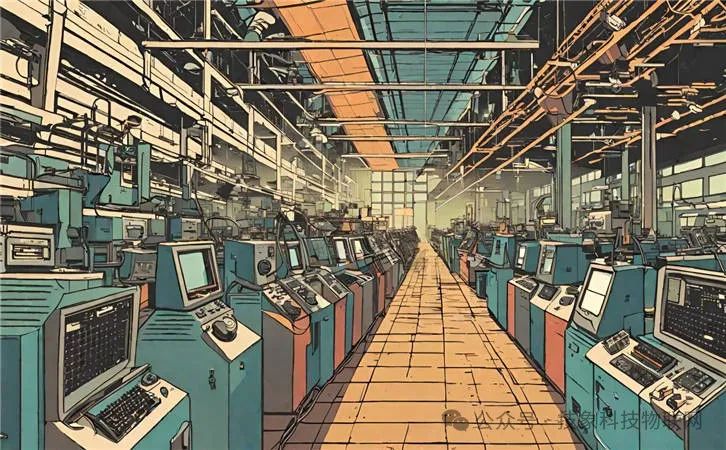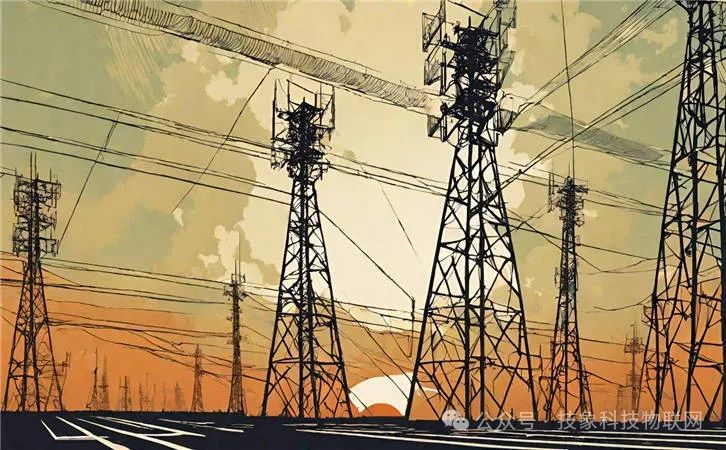The key technologies of the Industrial Internet of Things mainly include sensing control technology, network communication technology, information processing technology, and security management technology. Sensing control technology mainly involves technologies such as sensors, RFID, and multimedia, which enable real-time monitoring and data collection of machine performance, environmental conditions, and product quality. Network communication technology ensures that this data can be transmitted efficiently and securely over the network, including but not limited to mobile communication and ubiquitous technology. Information processing technology involves big data analysis and cloud computing, which can process and analyze the collected data to optimize operations and enhance decision support capabilities. Security management technology focuses on protecting Industrial Internet of Things systems from unauthorized access and other security threats, ensuring data security and privacy protection.
In addition, the Industrial Internet of Things also involves other key technologies, such as automated robotics and simulation technology, which play important roles in improving production efficiency and optimizing production processes. Cyber-Physical Systems (CPS) are also one of the cores of Industry 4.0, which can respond to changing environments and even predict changes in physical system processes through wireless sensing and actuation.

The key technologies of the Industrial Internet of Things cover multiple aspects from data collection, transmission, processing, analysis, to security protection, which together form the foundation of the Industrial Internet of Things, enabling it to play a key role in smart manufacturing and improving production efficiency.
1. What Are the Latest Development Trends of Sensing Control Technology in the Industrial Internet of Things?
The latest development trends of sensing control technology in the Industrial Internet of Things mainly include the following aspects:
-
Improving the intelligence level of systems: With the development of technologies such as artificial intelligence and machine learning, Industrial Internet of Things systems can process data and make decisions more intelligently, thereby improving production efficiency and product quality.
-
Achieving integration of sensing, transmission, and control: Through technological innovations, such as advancements in IoT communication technology, seamless connections from data sensing to data transmission to data control have been achieved, improving system response speed and flexibility.
-
Enhancing system performance and adaptability through technological innovations: The application of new technologies allows Industrial Internet of Things systems to better adapt to different working environments and needs, enhancing system reliability and stability.
-
Continuous improvement of dynamic perception, risk warning, and scientific decision-making capabilities: With the development of IoT technologies, especially the application of near-field communication and wireless sensing technologies, Industrial Internet of Things systems can achieve real-time monitoring of the environment and equipment status, timely detect potential risks, and make scientific decisions based on data analysis.
-
Incorporating ubiquitous technology computing models and mobile communication: The application of these technologies significantly improves manufacturing efficiency and optimizes production processes, enabling Industrial Internet of Things systems to function in a wider range of scenarios.
-
Supporting autonomous data collection, learning, analysis, and decision-making loops: This trend emphasizes the enhancement of autonomy in Industrial Internet of Things systems, meaning that the systems can not only autonomously collect and process data but also learn and optimize based on data to support ubiquitous connections, elastic supply, and efficient allocation of resources.
The latest development trends of sensing control technology in the Industrial Internet of Things mainly focus on enhancing intelligence levels, achieving integrated operations, improving performance and adaptability through technological innovations, enhancing dynamic perception and scientific decision-making capabilities, and supporting autonomous data processing and optimization.

2. What Network Communication Technologies Are Proven to Be Most Effective and Secure in the Industrial Internet of Things?
The most effective and secure network communication technologies in the Industrial Internet of Things mainly include 5G, ZigBee, Wi-Fi, and Low Power Wide Area Network (LPWAN). These technologies each have their characteristics and application scenarios, collectively forming the communication network foundation of the Industrial Internet of Things.
5G technology plays an important role in the Industrial Internet of Things due to its high speed, low latency, and large connection capacity. It supports machine-to-machine (M2M) communication, providing powerful data transmission capabilities for Industrial Internet of Things networks. The application of 5G technology helps achieve widespread connectivity of production units, forming efficient information flows on the production site.
ZigBee, as a short-range wireless local area network technology, is widely used in the Industrial Internet of Things due to its low power consumption and low cost. It is suitable for small-scale, low-power device connections and is ideal for applications requiring long-distance transmission.
Wi-Fi, a common wireless communication technology, still plays an important role in the Industrial Internet of Things despite being primarily used for short-distance communication. It provides stable, high-speed network connections, which are particularly important for industrial applications requiring high-speed data transmission.
LPWAN technology, or Low Power Wide Area Network, is mainly used for long-distance, low-bandwidth communication scenarios. It is especially suitable for Industrial Internet of Things applications with wide coverage and numerous devices, such as smart cities and remote monitoring systems.
5G, ZigBee, Wi-Fi, and LPWAN are the most effective and secure network communication technologies in the Industrial Internet of Things. Their respective advantages enable them to play key roles in different application scenarios, collectively driving the development of the Industrial Internet of Things.

3. How Does the Data Processing Technology of the Industrial Internet of Things Achieve the Integration of Big Data Analysis and Cloud Computing?
The integration of the Industrial Internet of Things (IIoT) with big data analysis and cloud computing is mainly achieved through the following aspects:
-
Data collection and storage: The Industrial Internet of Things collects massive amounts of data through various sensors and devices, including informational data, IoT data, and cross-domain data, forming the core elements of industrial big data. This data is then stored in the cloud or at edge computing nodes, providing a foundation for subsequent data analysis.
-
Integration of edge computing and cloud computing: Edge computing moves data processing tasks to the edge of devices, allowing for faster data processing and reduced network latency. Cloud computing utilizes distributed computing and virtual resource management technologies to form a shared resource pool, providing computing and storage resources dynamically on demand. The combination of both, known as edge-cloud, allows for preliminary processing and analysis of data at the device level, with results transmitted to the cloud for deeper analysis.
-
Intelligent data analysis: Through the application of artificial intelligence algorithms, the vast amounts of collected data are analyzed to achieve goals such as predictive maintenance, production process optimization, and supply chain optimization. This step relies not only on powerful computing capabilities but also on efficient data processing and analysis technologies.
-
Security and privacy protection: Ensuring data security and privacy protection during data processing and analysis is crucial. This includes technical measures such as data encryption, access control, and security auditing to prevent data leakage or unauthorized access.
The data processing technology of the Industrial Internet of Things achieves efficient collection, storage, and analysis of data through the integration of edge computing and cloud computing. At the same time, through intelligent data analysis and security measures, it brings benefits such as predictive maintenance and production process optimization to enterprises, promoting the development of industrial intelligence.
4. How to Implement Effective Security Management in Industrial Internet of Things Systems to Protect Data Security and Privacy?
Implementing effective security management in Industrial Internet of Things systems to protect data security and privacy requires a multi-faceted approach and various technologies. Firstly, enhancing the security of IoT devices can be achieved by changing the default settings of routers, using strong passwords, regularly updating devices, enabling two-factor authentication, and disabling UPnP functionality. Additionally, data encryption is a crucial means of preventing unauthorized access and tampering; encrypting data through encryption algorithms can effectively protect data security.
Implementing access control strategies to restrict access permissions to system resources is another important protective measure. This helps ensure that only authorized users can access sensitive information or perform specific operations. Security auditing is also an indispensable part; conducting regular security audits can help identify potential security threats and vulnerabilities, allowing for timely remediation.
The comprehensive application of technological measures, management practices, and legal regulations is key to protecting data security and privacy in the Industrial Internet of Things. Strengthening data encryption, improving security policies and measures, applying privacy protection technologies, enhancing regulatory mechanisms, and increasing employee awareness are all necessary steps. Moreover, selecting the appropriate granularity to manage IoT data and ensuring proper calibration of sensors is particularly important in harsh industrial environments.
Establishing IoT data management strategies helps reduce cybersecurity risks and ensures data privacy. Effective strategies can not only enhance data security but also improve the overall stability and reliability of the system. Finally, considering the importance of information security and personal information protection, completing certification projects and compliance checks, such as PCI-DSS data security certification and ISO 27001 security certification, is crucial for building trust and protecting user information.
Through the comprehensive application of the above measures and technologies, effective security management can be implemented in Industrial Internet of Things systems to protect data security and privacy.
5. What Are the Application Cases of Cyber-Physical Systems (CPS) in Industry 4.0?
The application cases of Cyber-Physical Systems (CPS) in Industry 4.0 mainly include the following aspects:
-
Smart manufacturing: The “Made in China 2025” initiative explicitly emphasizes that smart manufacturing based on Cyber-Physical Systems, such as smart equipment and smart factories, is leading the transformation of manufacturing methods. This indicates that CPS technology plays an important role in promoting the intelligent and automated development of the manufacturing industry.
-
Industrial robots: There are cases showing that sensors with machine vision recognition are installed on industrial robots, allowing them to automatically identify the shapes of workpieces and grasp them accurately. This application case demonstrates the potential of CPS technology in improving production efficiency and accuracy.
-
Innovations in complex network applications: The complex networks in CPS are at the forefront of application innovation and are advancing into numerous application fields. This means that CPS technology is not limited to traditional manufacturing applications but has expanded into broader fields such as information technology and transportation systems.
-
Comparison and connection between digital twins and Cyber-Physical Systems: Although CPS and digital twins (DT) are not entirely the same, they both encompass the fundamental connotations of information-physical connections, real-time interactions, organizational integration, and deep collaboration. This indicates that CPS technology has significant value in achieving high integration and intelligent management of devices and systems.
The application cases of Cyber-Physical Systems (CPS) in Industry 4.0 cover various aspects, including smart manufacturing, industrial robot automation, innovations in complex network applications, and comparisons and connections with digital twins, showcasing the broad application and profound impact of CPS technology in promoting intelligent upgrades in manufacturing and related industries.